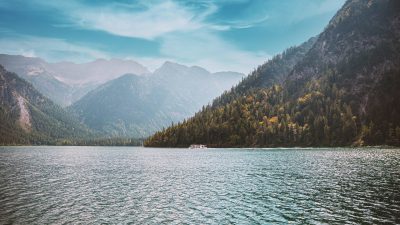China’s Catastrophic Deluge That Shook A Nation
1. Introduction: The Great Flood That Engulfed China
The 1911 Yangtze River Flood was one of the deadliest natural disasters in Chinese history, devastating vast regions and leaving millions displaced. As torrential rains battered the Yangtze River Basin, water levels surged uncontrollably, submerging cities, villages, and farmlands. This flood, occurring during a politically fragile period in China, exacerbated existing hardships, leading to massive economic losses, widespread famine, and an unparalleled humanitarian crisis.
The catastrophe was not merely a natural disaster; it was a devastating event that unveiled deep-rooted infrastructural weaknesses, government incompetence, and a lack of preparedness. Entire communities were wiped out, and the sheer magnitude of suffering remains a chilling reminder of nature’s destructive force. Understanding the causes, impact, and aftermath of the 1911 Yangtze River Flood is crucial in appreciating its long-lasting effects on China’s history and development.
2. The Brewing Storm: How the Disaster Unfolded
The flood was primarily triggered by an unusually heavy monsoon season that lasted for months. The Yangtze River, already known for its unpredictable water levels, began to swell due to relentless rainfall and poor drainage infrastructure. The situation worsened as tributaries overflowed, merging into one of the most destructive floods recorded in China’s history.
The crisis was intensified by:
- Excessive Rainfall: Torrential rains in mid-1911 saturated the soil and caused rapid runoff, overwhelming the river’s capacity.
- Deforestation and Soil Erosion: Extensive logging in upstream regions reduced natural barriers, allowing floodwaters to sweep unimpeded across the landscape.
- Lack of Flood Control Systems: Unlike modern times, China in 1911 lacked advanced flood mitigation structures such as levees and reservoirs, making it impossible to control the water flow.
By late summer, the river had completely breached its banks, drowning vast areas and triggering one of the worst humanitarian crises in Chinese history.
3. The Devastating Toll: Death, Destruction, and Shocking Statistics
- Massive Death Toll: It is estimated that over 100,000 people perished in the floods, with many swept away or trapped in their submerged homes.
- Widespread Injuries: Thousands suffered from broken limbs, drowning injuries, and waterborne diseases due to contaminated water.
- Unprecedented Displacement: Over 500,000 people were left homeless as entire towns were washed away.
- Farmland Ruined: The flooding destroyed vast agricultural lands, leading to severe food shortages and famine.
- Economic Collapse: The estimated financial loss was equivalent to billions in today’s currency, as businesses, trade routes, and infrastructure were obliterated.
- Disease Outbreaks: Cholera, dysentery, and typhoid spread rapidly due to stagnant floodwaters and unhygienic conditions.
- Civic Unrest: The destruction led to widespread anger towards the Qing Dynasty, further weakening an already fragile government.
4. Cities Drowned: The Regions Worst Affected
The Yangtze River floodwaters engulfed entire cities, towns, and villages, displacing hundreds of thousands of people. The worst-hit areas included:
Wuhan: The Drowning Metropolis
As one of China’s most prominent trade hubs, Wuhan suffered catastrophic damage. Homes were washed away, businesses were destroyed, and thousands drowned as floodwaters rushed through the city.
Nanjing: A City Submerged
The former capital of China was left in ruins as historical landmarks, government buildings, and entire neighbourhoods were flooded.
Hubei and Anhui Provinces: Rural Devastation
The floodwaters tore through farmlands, destroying crops, killing livestock, and plunging rural communities into famine.
5. The Human Cost: Suffering Beyond Numbers
The flood wasn’t just a physical disaster—it was a humanitarian crisis. Survivors faced horrific conditions, including:
- Starvation: With farms destroyed, food supplies dwindled, leaving thousands malnourished.
- Homelessness: Families were forced to seek shelter in makeshift camps, exposed to the elements.
- Orphaned Children: Thousands of children lost their parents, wandering the streets alone.
- Exploitation: In the aftermath, reports of human trafficking, forced labour, and social unrest increased as desperate families tried to survive.
The government’s failure to respond adequately only made matters worse, fueling resentment towards the Qing Dynasty.
6. The Political Earthquake: How the Flood Shook the Qing Dynasty
The 1911 Yangtze River Flood occurred at a crucial moment in China’s political history. Just months later, the Xinhai Revolution erupted, leading to the collapse of the Qing Dynasty. The flood contributed to this by:
- Exposing Government Incompetence: The dynasty failed to provide relief, leaving the public angry and desperate.
- Worsening Economic Hardships: Businesses were destroyed, unemployment soared, and people blamed the government.
- Strengthening Revolutionary Sentiments: Frustrated citizens turned to revolutionary leaders, demanding change.
The flood wasn’t just a natural disaster—it was a political trigger that helped reshape China’s history.
7. Lessons Learned: The Aftermath and Rebuilding
- Early Disaster Management Efforts: The tragedy highlighted the urgent need for flood control systems and emergency response teams.
- Introduction of Modern Infrastructure: In later years, China began constructing dams, levees, and drainage systems to prevent similar disasters.
- Environmental Awareness: The role of deforestation and poor land management became widely recognised, leading to reforestation efforts and better land-use policies.
- A Shift in Governance: The Qing Dynasty’s failure in handling the crisis pushed China towards modernisation and reform, paving the way for new leadership.
8. A Century Later: Is China Prepared for Another Disaster?
More than a century after the 1911 Yangtze River Flood, China has made significant advancements in flood management, disaster preparedness, and infrastructure development. However, despite these improvements, the nation still faces serious flood-related threats due to climate change, rapid urbanisation, and increasing extreme weather events.
One of the major challenges today is rising sea levels, which put coastal cities like Shanghai and Guangzhou at higher risk of severe flooding. With global warming accelerating glacial melt and thermal expansion of the oceans, low-lying urban centres face a growing threat of storm surges and tidal floods. Additionally, China’s rapid urban expansion has contributed to waterlogging issues, as paved surfaces and unplanned construction projects have reduced the land’s natural ability to absorb excess water.
Furthermore, climate change has made extreme weather events more frequent and intense. The Yangtze River Basin remains highly vulnerable to heavy rainfall, typhoons, and seasonal monsoons, all of which pose a risk of catastrophic flooding. Although large-scale dams, reservoirs, and flood diversion projects have significantly reduced the likelihood of disasters on the scale of 1911, no system is entirely foolproof.
China’s ability to adapt to future climate challenges will depend on continued investments in modern flood control systems, eco-friendly urban planning, and stronger early-warning mechanisms. The lessons of 1911 must never be forgotten, as failing to prepare for future disasters could result in another humanitarian catastrophe.
9. Conclusion: A Tragedy That Redefined China’s Future
The 1911 Yangtze River Flood was not just a natural disaster—it was a historical turning point. It exposed China’s deep-rooted vulnerabilities, from weak government leadership to the lack of infrastructure needed to manage large-scale calamities. The devastation left over 100,000 dead, millions homeless, and a nation on the brink of starvation.
Beyond the immediate destruction, the flood played a role in reshaping China’s political landscape. Public outrage over the Qing Dynasty’s failure to handle relief efforts and provide emergency support accelerated calls for change, ultimately leading to the Xinhai Revolution and the fall of imperial rule. It was a clear example of how poor governance in times of crisis can lead to a nation’s downfall.
While modern China is far better equipped to mitigate flooding, the lessons of 1911 still resonate today. The disaster serves as a warning to governments worldwide—failing to invest in disaster prevention, infrastructure, and emergency response can lead to catastrophic consequences.
10. Final Thoughts: Remembering the Forgotten Victims
The 1911 Yangtze River Flood left a deep scar on China’s history, yet over time, it has faded from public memory. The victims—families who lost everything, children orphaned by the disaster, and entire villages swallowed by the rising waters—deserve to be remembered.
As China continues to modernise, it is crucial to honour the resilience of those who survived and ensure that such tragedies are not repeated. While modern flood control systems have reduced the risks, the threat of climate change and extreme weather events still looms. The key to preventing future disasters lies in continuous investment in infrastructure, environmental sustainability, and proactive governance.
By learning from the past and embracing innovative flood management strategies, China can better protect its people and its future generations from nature’s unpredictable wrath.
FAQs
1. How many people died in the 1911 Yangtze River Flood?
Over 100,000 people perished, with many drowned, crushed in collapsing buildings, or succumbing to disease and starvation.
2. What caused the flood?
The flood was triggered by relentless monsoon rains, worsened by deforestation, soil erosion, and weak flood control infrastructure.
3. How did the flood contribute to the fall of the Qing Dynasty?
The Qing government’s failure to provide relief and manage the crisis increased public anger, fuelling the Xinhai Revolution, which led to the end of imperial rule.
4. What were the economic consequences of the disaster?
The flood destroyed farmlands, businesses, and cities, leading to billions in damages and pushing many into poverty and starvation.5. Could such a disaster happen again today?
Despite modern flood control systems, climate change and urbanisation still pose risks, making flood preparedness an ongoing challenge for China.




